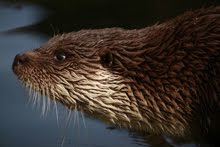 they are the smallest bird in Europe. Well, they are certainly not large! While the rest of the BirdLife Austria group was chatting, I took some time to follow their movements to try to see a little of their characters. I found one little guy collecting nesting material - darting all about, here and there (they certainly are flitty little birds). I suppose this guy was building his nest in the heavy, leafy ends of one of the conifers - hiding the next generation away in its dense, protective cover.
they are the smallest bird in Europe. Well, they are certainly not large! While the rest of the BirdLife Austria group was chatting, I took some time to follow their movements to try to see a little of their characters. I found one little guy collecting nesting material - darting all about, here and there (they certainly are flitty little birds). I suppose this guy was building his nest in the heavy, leafy ends of one of the conifers - hiding the next generation away in its dense, protective cover.Incredibly, the female goldcrest (Regulus regulus, Wintergoldhähnchen) incubates the eggs alone and is not regularly fed by the male and the total mass of eggs can be 50% more than her body weight (Haftorn 1978 Ornis Scandinavica 9)! Despite doing it all along, these little 5gram females are able to keep the temperature of her brood remarkably constant, by varying the amount of time she spends on the eggs (and away from the eggs)(ibid).
A very closely related species to the goldcrest, is the equally adorable firecrest (Regulus ignicapillus, Sommerhähnchen). Both are exceptionally flitty species; never sitting still and always darting from one branch to another. And even when they do seem to be on one branch for more than 10 seconds, they tend to flap and shake their wings. This is typical behavior of small insectivorous birds (willow warblers, tree creepers, white-eyes and many others also do this). By flicking their wings, the sharp movement tends to startle little well-camouflaged insects just enough to get them to move. And even if they move just a wee bit, the sharp eyes of the insectivore will spot them (and eat them for breakfast!). But despite looking very similar and both feeding on small insects, it seems that their territories can overlap extensively (no interspecific territoriality) and they differ in how they feed (Leisler & Thaler 1982 Annales Zoologici Fennici 19/4).

To tell these two little guys apart, birders look at their cheeks: the firecrest has strong black and white eye stripes (see left). Compare this to the plainer cheeks of the goldcrest above. But even easier than trying to look at their make-up is to just listen to them: they both have very distinctive calls. Try these links to the RSPB site to listen to how they sound!
firecrest
goldcrest
Happy birding,
Dale Forbes






.jpg)



.jpg)








.jpg)



No comments:
Post a Comment